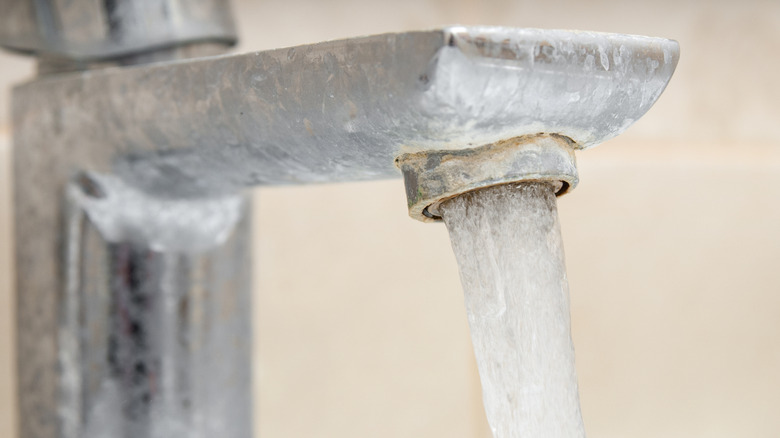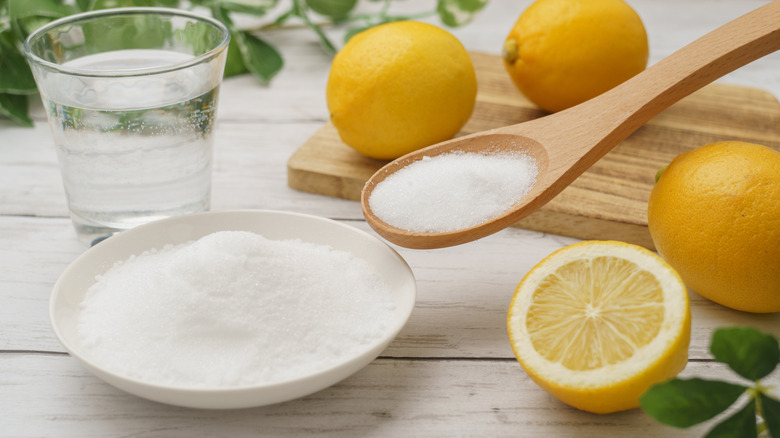Get Rid Of Stubborn Limescale Without Using Vinegar. Here's How
If you have large amounts of minerals flowing through your taps, you already know the horrors hard water can cause in your home. One of the primary issues you've likely come across is limescale, a hard substance created by the calcium and magnesium levels in your water. These stubborn deposits can make it difficult to clean, but not impossible. In fact, you can easily remove limescale with a few game-changing ingredients. You simply have to choose the right ones. Many people turn toward vinegar, as it is a versatile cleaning tool, but that isn't your only option. Instead, reach for baking soda and citric acid to cut through the crusty substance.
The reason citric acid is so effective on limescale is its highly acidic pH level. When this acid is applied to the build-up, it breaks down the calcium carbonate in the limescale, making it easy to remove. Descaling products are readily available in stores and could do the job, but limescale build-up can happen on any surface, from bathroom sinks to tea kettles. Because of this, you want something that won't leave a mark no matter where it's applied. This citric acid and baking soda mix is both safe to use on most surfaces and non-toxic, helping you to effectively cut through limescale without worrying about damage or unsafe chemicals.
Using citric acid and baking soda
While citric acid will break down limescale on its own, sometimes you need an added abrasive for the extra tough jobs. That's where baking soda comes in. To use this combination, first pour baking soda all over the limescale. Then, dissolve a tablespoon of citric acid powder in warm water, soak a washrag in the mixture, and place it flat over the baking soda. Leave it alone for 30 minutes to allow the citric acid to do its chemical magic. Once you lift the towel, use a soft brush to remove the build-up and rinse. If there are remaining spots that just won't come loose, try rubbing them with a lemon peel. Rinse again with warm water and wipe dry to reveal your sparkling new surface.
It's difficult to say how often limescale will appear because it depends on the amount of minerals in your water, but it's important to note that it will return. To avoid stubborn build-up, try to stay on top of your cleaning routine and regularly wipe down problem areas with an acidic solution. This will both make the cleaning process easier and help to prevent larger issues like clogged pipes and the formation of bacteria.

